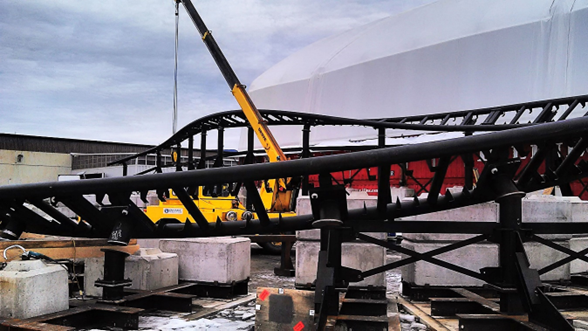Steel currently plays a fundamental role in the construction industry, as it is a highly demanded material in various industrial projects. Structural steel is used to construct bridges, buildings, industrial complexes, recreation centers, and more. Structural steel is mainly composed of an alloy of iron and carbon, and the latter component is responsible for increasing or decreasing the alloy’s strength and flexibility. Next, we will look at the main characteristics of structural steel:
Ductility
When we talk about the ductility of structural steel, we refer to its ability to withstand large deformations without breaking or compromising its overall structure. The ductility of structural steel depends on the amount of carbon present in the alloy; for higher levels of ductility, the blend must have very little carbon presence (since it is the component that can make it brittle). It should be noted that when a structure made of structural steel is close to collapse, users will be able to see a deformation or crack in said structure.
Compatibility in joining or welding processes
Structural steel, unlike other steels, is a material that can be engineered to be lighter in weight, and therefore generates fewer costs when handling it on a construction site and especially when a project needs additional connective material between larger components. Due to its strength and ease of handling, structural steel is ideal for instances where one element needs to hold a specific shape, pieces made of other materials need a new connection between them, or existing structure(s) simply need to be expanded. The versatility of structural steel is largely thanks to its ability to be easily joined to other objects by either bolts and screws or by welding.
Resistance to corrosion and wear
One of the main characteristics of structural steel is its resistance to corrosion and wear, and it owes its high efficiency and durability to its mechanical properties. As we mentioned in the previous section, it is a lighter and stronger material than other steels; one of its best qualities is that its mechanical properties remain stable over time, which is very useful in a chain of certified production.
In addition to maintaining its mechanical properties, structural steel is also very resistant to corrosion and wear, which allows the future structure to have a long useful life.
High strength per unit weight
Another highlight of structural steel is its high resistance per unit of weight; as it is a light material, it can be an excellent choice for bridge and building constructions, as well as helping to repair structures without adding extra weight that can cause a collapse in the project (either in the short- or medium-term).
Reusable material
Structural steel is a material that can be reused. When a structural steel construction reaches the end of its functional life, it can be disassembled or dismantled, which makes it possible to take advantage of the removed material to melt it down and reshape it for a new project.
What do you think about this topic? Do you know other characteristics of structural steel?
If you have any questions or queries, contact us or write your query below (comments section).
